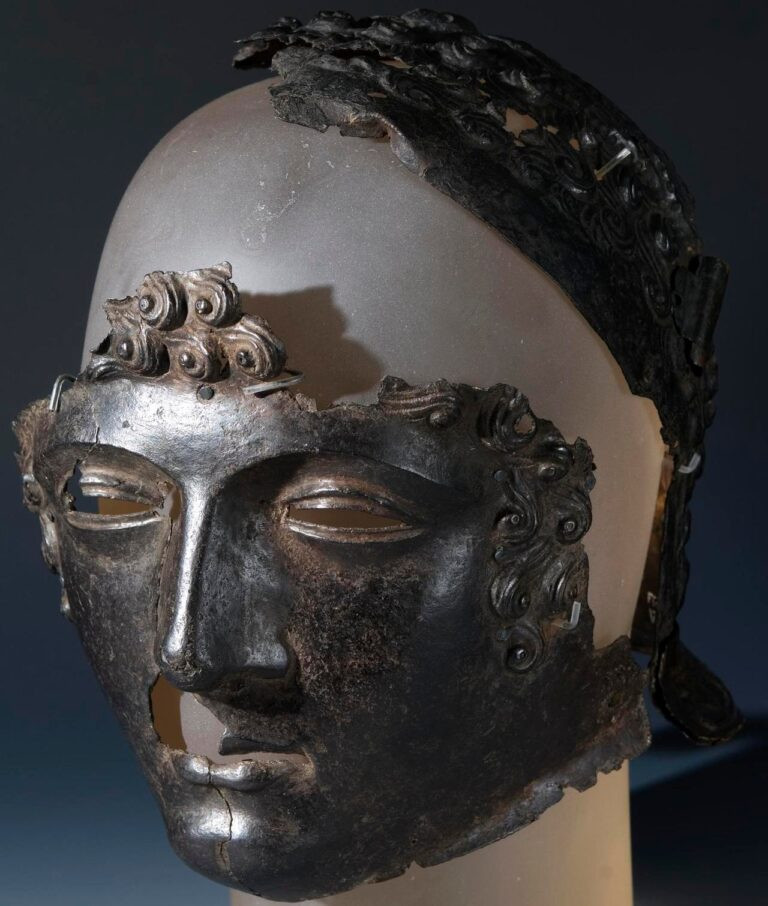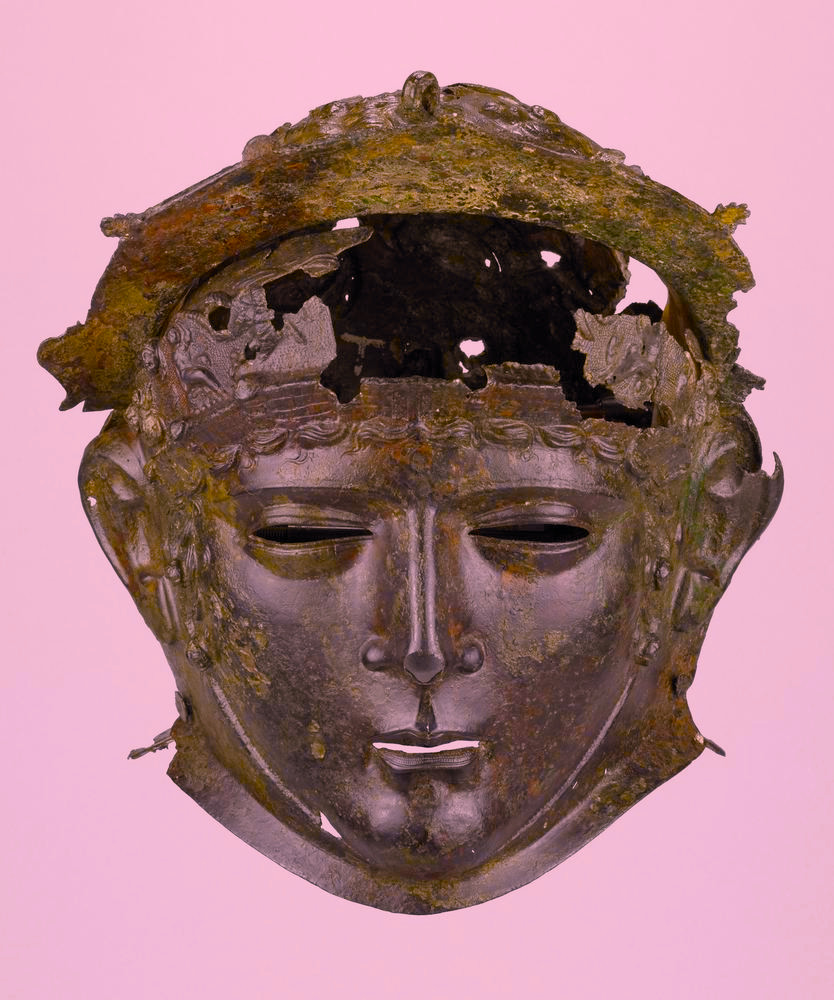In the quaint town of Ribchester, Lancashire, a chance encounter in 1796 would forever change our understanding of Roman cavalry regalia. As a young boy, John Walton, stumbled upon a buried hoard while exploring near the river, little did he know he had uncovered a treasure that would captivate historians for centuries to come. The discovery of the Ribchester Helmet, an ornate copper alloy masterpiece adorned with intricate reliefs, has shed new light on the sophistication and artistry of the Roman Empire at the height of its power.
The Hoard’s Contents

Buried nearly 3 meters deep, the hoard contained a tangled mass of corroded metalwork, including the breathtaking Ribchester Helmet. Though defaced by the corrosive effects of the sand it was buried in, the helmet emerged as a true masterpiece of Roman craftsmanship. With a visor in the form of a human face and detailed reliefs depicting a battle scene, the Ribchester Helmet is a testament to the skill and creativity of the Roman artisans who created it.
A Relic of Roman Power

Through careful analysis, the Ribchester Helmet has been dated to the late 1st or early 2nd century AD, a time when the Roman Empire was at the pinnacle of its power and influence. While undoubtedly worn by a Roman cavalryman, the helmet’s fine craftsmanship and rich ornamentation suggest it was not intended for combat. Instead, it may have been used in cavalry exercises or displays, allowing soldiers to showcase their skills and the might of the Roman military.
Scholars have proposed several theories regarding the helmet’s purpose. It may have been a trophy, carried in procession during military festivals and celebrations to showcase the power and victories of the Roman army. Alternatively, it could have been used in ceremonial or parade-like events, allowing the wearer to demonstrate their status and the prestige of the Roman cavalry.
A Rare Treasure

The Ribchester Helmet is a true rarity in the world of Roman archaeology. At the time of its discovery, it was the only helmet of its kind found in Great Britain, and it has remained a prized possession of the British Museum since its acquisition in 1814. Only two other similar helmets have been unearthed – the Newstead Helmet and the Crosby Garrett Helmet, the latter selling for a staggering £2.3 million at auction, underscoring the immense value and significance of these extraordinary artifacts.
The Legacy of the Ribchester Helmet

The Ribchester Helmet stands as a testament to the ingenuity and artistry of the Roman Empire, as well as a reminder of the rich cultural heritage that lies beneath the surface of the British countryside. This sinister yet captivating artifact has captured the imagination of scholars and the public alike, and its continued display ensures that the story of the Ribchester Hoard will be shared for generations to come.
Conclusion

The discovery of the Ribchester Helmet in 1796 was a chance encounter that has had a lasting impact on our understanding of Roman cavalry regalia and the artistic prowess of the empire. This ornate and meticulously crafted helmet, with its intricate reliefs and human-faced visor, stands as a testament to the skill and creativity of Roman artisans. As one of the rarest and most valuable Roman artifacts found in Great Britain, the Ribchester Helmet continues to fascinate and inspire, offering a glimpse into the grandeur and power of the Roman Empire at the height of its glory.
